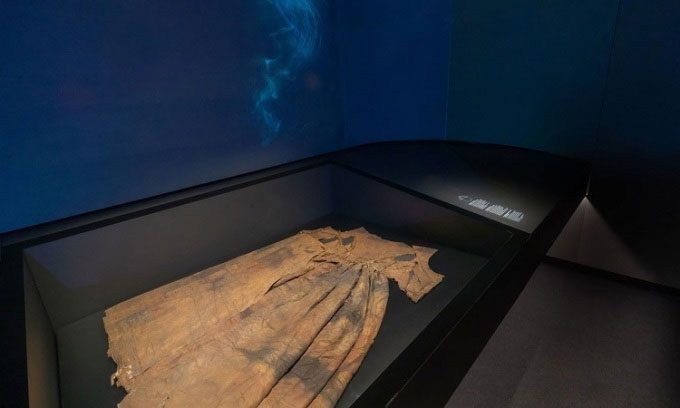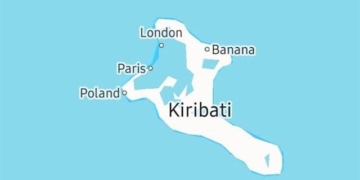The wedding dress embroidered with silver heart patterns and adorned with round silver leaves may have belonged to a woman of the highest social class in 17th century Europe.
The broken chests revealed from the Palmwood wreck were brought to the surface in 2014. Researchers at the Kaap Skil Museum, which showcases artifacts from the shipwreck, indicate that the chests were filled with clothing, textiles, silverware, leather-bound books, and other goods, likely belonging to individuals from the upper echelons of society centuries ago. Some of the most notable items include two exquisite and well-preserved dresses, one made of silk and a wedding dress woven from silver.

The silver wedding dress on display at the Kaap Skil Museum. (Photo: Kaap Skil Museum).
Very few textiles or garments from the 17th century remain today, and discovering them in shipwrecks is even rarer due to the rapid decomposition of fabrics. Both dresses were stored together in the same chest and were made using precious silver thread. The first silk dress was introduced in 2016, crafted from Damask satin, a fabric with floral patterns. The outfit includes an underdress, puffed sleeves, and a long pleated skirt that flares at the front, reminiscent of Western fashion from 1620 to 1630.
Meanwhile, the silver wedding dress was tailored for a special occasion, with each detail meticulously arranged, including an underdress and a skirt. The dress features a twisted silver thread embroidery that resembles hearts, along with round silver leaves sewn onto the garment. According to conservation expert Alec Ewing, the use of silver material gives the dress a formal and shimmering appearance. This is one of the most unique dresses that a lady of the highest social class in Western Europe could wear in her lifetime. Although silver tarnishes and deteriorates relatively quickly in a marine environment, experts can still discern the original patterns and decorative motifs.
Currently, the dress appears brown, but its original color was likely white, cream, or yellow silk. According to Maarten van Bommel, a conservation professor at the University of Amsterdam, there may only be two such dresses in the world. The two dresses were rinsed to remove excess salt but require minimal conservation work. To protect the garments, experts placed them in a special display case filled with pressurized nitrogen, which removes all oxygen to prevent degradation.
In 1660, the Palmwood ship carrying luxury goods sank off the coast of Texel, the largest island in the North Sea. Divers first discovered the wreck in 2010 near Burgzand, in the eastern Wadden Sea off Texel. As sand continued to be washed away from the wreck, the ship became visible in the summer of 2014, allowing divers to retrieve the goods on board.





















































